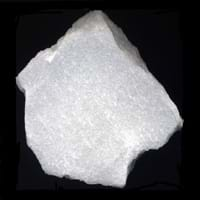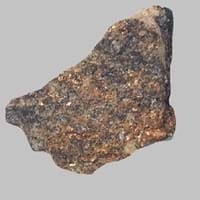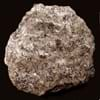Definition
Marble is a non-foliated metamorphic rock which is composed of recrystallized carbonate which is formed when limestone is exposed to high temperatures and pressures over a long time
Adakite is an intermediate to felsic volcanic rock that has geochemical characteristics of magma which is said to be formed by partial melting of altered basalt that is subducted below volcanic arcs
Origin
Egypt
Adak, Aleutian Islands
Discoverer
Unknown
Defant and Drummond
Etymology
From the Greek marmaros, shining stone and also from the English word marmoreal meaning marble-like
From Adak, Aleutian Islands
Class
Metamorphic Rocks
Igneous Rocks
Sub-Class
Durable Rock, Medium Hardness Rock
Durable Rock, Medium Hardness Rock
Group
Not Applicable
Volcanic
Other Categories
Medium Grained Rock, Opaque Rock
Fine Grained Rock, Medium Grained Rock, Opaque Rock
Texture
Granular
Porphyritic
Color
Black, Blue, Brown, Grey, Pink, White
Black, Brown, Light to Dark Grey
Durability
Durable
Durable
Appearance
Veined and Shiny
Dull and Soft
Interior Uses
Bathrooms, Countertops, Decorative Aggregates, Entryways, Floor Tiles, Homes, Hotels, Interior Decoration, Kitchens, Stair Treads
Decorative Aggregates, Floor Tiles, Homes, Hotels, Kitchens
Exterior Uses
As Building Stone, As Facing Stone, Garden Decoration, Office Buildings, Paving Stone
As Building Stone, As Facing Stone, Office Buildings
Other Architectural Uses
Not Yet Used
Whetstones
Construction Industry
As Dimension Stone
As Dimension Stone, Cobblestones, Rail Track Ballast, Roadstone
Medical Industry
Not Yet Used
Not Yet Used
Antiquity Uses
Artifacts, Jewellery, Monuments, Sculpture, Small Figurines
Monuments, Sculpture, Small Figurines
Commercial Uses
Cemetery Markers, Commemorative Tablets, Creating Artwork, Curling, Laboratory bench tops, Paper Industry, Tombstones, Used in aquariums, Whiting material in toothpaste, paint and paper
Commemorative Tablets, Pottery, Used in aquariums
Types
Breccia Marble, Carrara Marble, Calacatta marble, Cultured Marble, Polished Marble, Honed Marble, Sand Marble
Not Available
Features
Available in Lots of Colors and Patterns, Easily splits into thin plates, Generally rough to touch, Is one of the oldest rock
Has High structural resistance against erosion and climate, Host rock for Diamond, Very fine grained rock
Archaeological Significance
Famous Monuments
Al Aqsa Mosque in Jerusalem, Buland Darwaza in Agra, India, Capitol Hill Building, Washington DC, Charminar in Hyderabad, India, Chhatrapati Shivaji Terminus in Maharashtra, India, Ephesus in Turkey, Faisal Mosque in Islamabad, Pakistan, Humayun's Tomb in Delhi, India, Jama Masjid in Delhi, India, Lotus Temple in New Delhi, India, Louvre in Paris, France, Mysore Palace in Karnataka, India, Neuschwanstein in Bavaria, Palace of Parliament in Bucharest, Romania, Parthenon in Greece, Potala Palace in Lahasa, Tibet, Prophet’s Mosque in Medina, Qutb Minar in India, Saint Basil's Cathedral in Moscow, Russia, St. Peter’s Cathedral in Vatican City, Taj Mahal in Agra, India, Tower of Pisa, Italy, Victoria Memorial in Kolkata, India, Washington Monument, US
Data Not Available
Famous Sculptures
Ajanta Caves in Maharashtra, India, Bust of Artemis, Elephanta Caves in Maharashtra, India, Lincoln Memorial in America
Data Not Available
Formation
Marble is a metamorphic rock produced from limestone in the earth crust. It is formed by the metamorphism of limestone.
Adakite rocks are formed when the hydrous fluids are released from minerals that break down in metamorphosed basalt, and rise into the mantle they initiate partial melting.
Mineral Content
Garnet, Graphite, Olivine, Pyrite, Quartz
Olivine, Plagioclase, Pyroxene
Compound Content
CaO, Iron(III) Oxide, FeO, MgO, Silicon Dioxide
Aluminium Oxide, MgO, Silicon Dioxide
Types of Metamorphism
Impact Metamorphism
Cataclastic Metamorphism, Contact Metamorphism, Impact Metamorphism, Regional Metamorphism
Types of Weathering
Biological Weathering, Chemical Weathering, Mechanical Weathering
Chemical Weathering, Mechanical Weathering
Types of Erosion
Chemical Erosion, Coastal Erosion
Coastal Erosion, Sea Erosion, Water Erosion
Grain Size
Medium Grained
Fine to Medium Grained
Fracture
Not Available
Conchoidal
Streak
White
Bluish Black
Porosity
Less Porous
Less Porous
Luster
Dull to Pearly to Subvitreous
Grainy, Pearly and Vitreous
Compressive Strength
Not Available
Cleavage
Perfect
Not Available
Toughness
Not Available
Not Available
Specific Gravity
2.86-2.87
Not Available
Transparency
Opaque
Opaque
Density
2.4-2.7 g/cm3
Not Available
Specific Heat Capacity
Not Available
Resistance
Heat Resistant
Heat Resistant, Pressure Resistant, Wear Resistant
Deposits in Eastern Continents
Asia
China, India
India, Russia
Africa
Namibia
Ethiopia, Somalia, South Africa
Europe
Italy, Spain
Iceland
Others
Not Yet Found
Not Yet Found
Deposits in Western Continents
North America
Not Yet Found
Canada, USA
South America
Not Yet Found
Brazil
Deposits in Oceania Continent
Australia
New South Wales, New Zealand, Queensland, Victoria
Not Yet Found
All about Marble and Adakite Properties
Know all about Marble and Adakite properties here. All properties of rocks are important as they define the type of rock and its application. Marble belongs to Metamorphic Rocks while Adakite belongs to Igneous Rocks.Texture of Marble is Granular whereas that of Adakite is Porphyritic. Marble appears Veined and Shiny and Adakite appears Dull and Soft. The luster of Marble is dull to pearly to subvitreous while that of Adakite is grainy, pearly and vitreous. Marble is available in black, blue, brown, grey, pink, white colors whereas Adakite is available in black, brown, light to dark grey colors. The commercial uses of Marble are cemetery markers, commemorative tablets, creating artwork, curling, laboratory bench tops, paper industry, tombstones, used in aquariums, whiting material in toothpaste, paint and paper and that of Adakite are commemorative tablets, pottery, used in aquariums.










